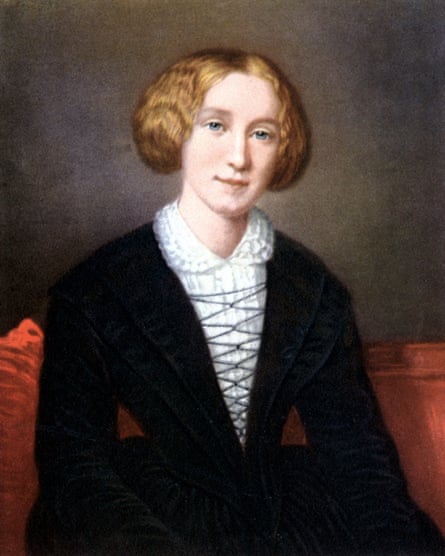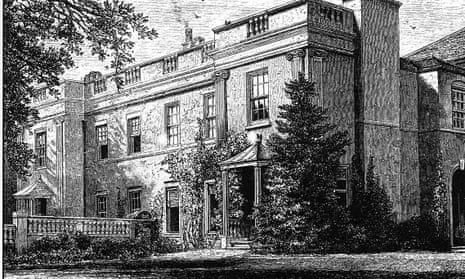Heritage campaigners are battling to restore the Coventry home of one of Britain’s greatest authors to its former glory, as the city prepares to become UK city of culture in 2021.
In its Victorian heyday, Bird Grove in Coventry was a two-storey town house with whitewashed walls and grand staircases, and was considered a classic of its genre. It was also home to a young Mary Ann Evans, better known by her pen name, George Eliot.
Today, despite enjoying Grade II-listed status, the property is all but abandoned. The paintwork is cracked, its wooden window frames have been replaced with plastic, and graffiti is scrawled across the walls. An unsightly steel fence runs along one side of the litter-strewn lawn, and a large To Let sign hangs outside. Until recently, the only clue to its historical importance was a small bronze plaque above the entrance.
“It’s such an important thing for Coventry. This is an author some call the greatest in England,” said John Burton, chairman of the George Eliot Fellowship. “There is little doubt in the minds of academics and biographers that those years in Coventry were crucial to [her] intellectual development.”
Bird Grove became a Bangladeshi Community Centre in the mid-1970s, and it allowed free access for Eliot enthusiasts. Visitors came from as far away as Japan. But funding dried up and the centre closed.
Open letters bemoaning the building’s disrepair, coordinated by Burton, have attracted some high-profile signatories. George Eliot’s biographer, Rosemary Ashton, the Bafta-winning director Giles Foster, and the screenwriter Andrew Davies, who adapted Middlemarch for the BBC in 1994, all lent their support. “But nothing much came of it,” Burton said.

There is now hope that the bicentennial of Eliot’s birth next year, combined with Coventry’s future city of culture status, will kickstart a restoration project aimed at raising awareness of Eliot’s connection to the city.
“We want 2021 to have some sort of legacy, even if it’s just another plaque,” Burton said, “and to raise awareness of what George Eliot means to Coventry. We do our best, but sometimes you’re banging your head against a lot of indifference.”
Concerns about the plight of the house will this month see it added to a 1,500-strong database of at-risk properties drawn up by campaign group SAVE Britain’s Heritage.
“Obviously, if a building doesn’t have a use, it is very vulnerable,” said Liz Fuller, SAVE’s buildings at risk officer. “It could fall down. It could be burned down. Vandals could get in. In order to survive, these buildings need a new use.”
Fuller shares Burton’s belief in the historic importance of Bird Grove when it comes to understanding Eliot.
“She moved in quite intellectual circles while she was there, and it was obviously a formative time of her life, though she wasn’t writing her novels at that stage.”
She remains hopeful that the property could be restored and reconnected to its literary past.
“If you compare it to the old photos, you can see that the character could be brought out. It could be a writers’ retreat or an education centre or a museum dedicated to George Eliot.”
Bird Grove is typical of many of the properties on SAVE’s database in that it has a complicated ownership history, which has contributed to its neglect. “Maybe a property has been owned by a particular family for a long time and there’s not a lot of agreement on what people want to do with it,” Fuller said. “Or there isn’t an understanding of how to maintain it. There might be some complicated access problems. If it’s an industrial building, the economy and the demographic of the area might have changed vastly so the original use is no longer practical.”
Joining Bird Grove on this year’s list of entries to SAVE’s database is the Bronte cinema in Howarth, West Yorkshire.
“It’s unlisted and, for that reason, unknown and therefore a little more vulnerable,” Fuller said. “It could make a theatre or a cinema again, or some kind of cultural centre. Haworth is overrun by people on the Brontë trail, so you would think it could have some related use.” Also on the list is the Newark Corn Exchange, a grand Italian Baroque building in Nottinghamshire that was built in the mid-19th century. Once used as a bingo hall, it now stands empty and is up for sale.
Another entry is a row of Victorian allotment sheds – again in Coventry. “They are very individual, very charming, but they really need to be given a good dose of TLC,” Fuller said. “People are nervous about taking on an old building. They think it will be more expensive and complicated, which is not necessarily the case. In a lot of cases, it can be cheaper or more energy-efficient to give them a new use.”

Comments (…)
Sign in or create your Guardian account to join the discussion